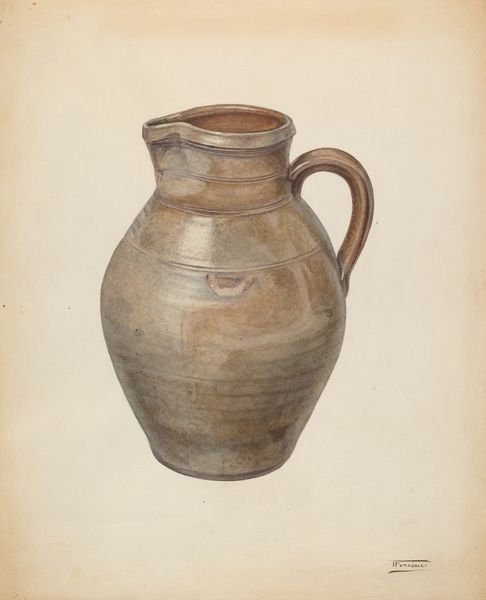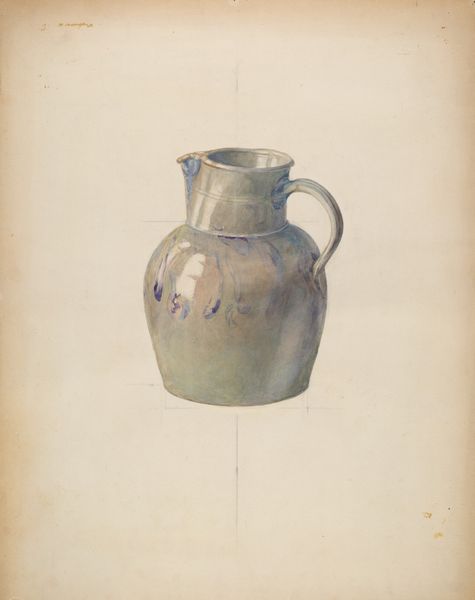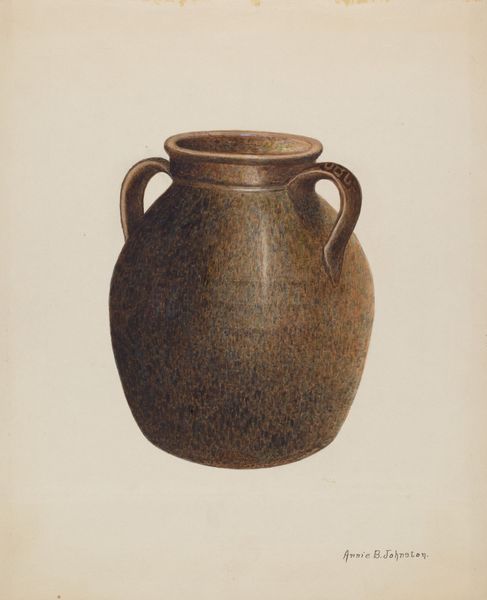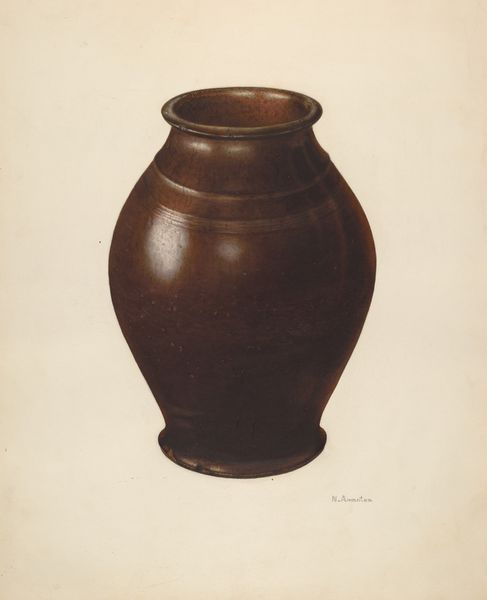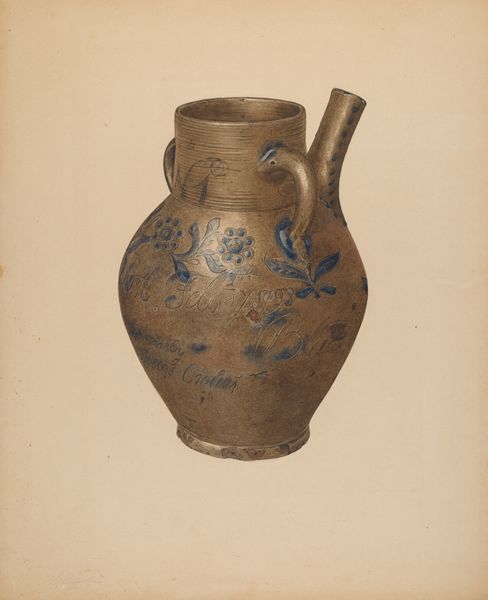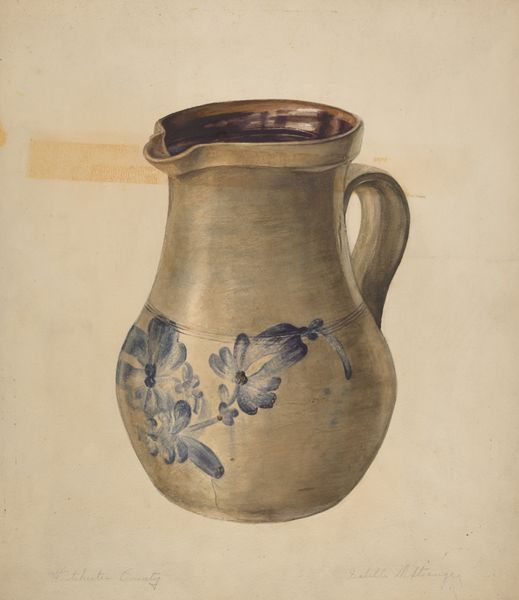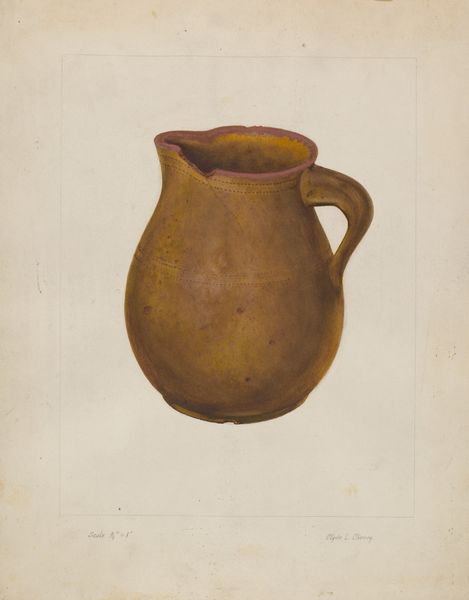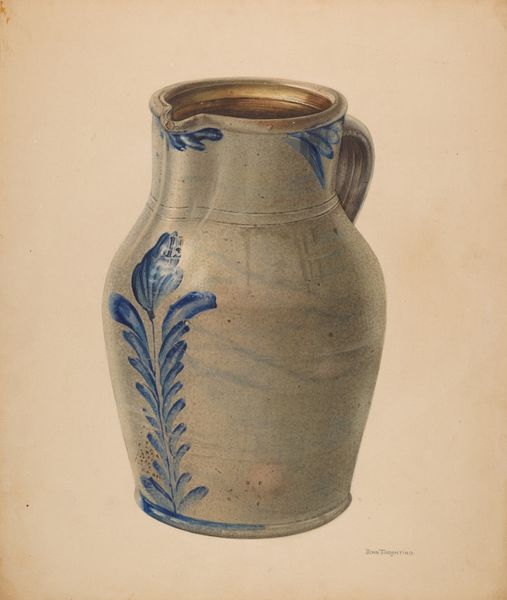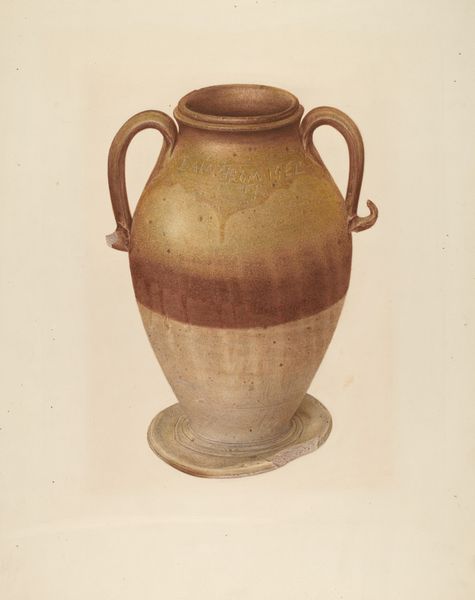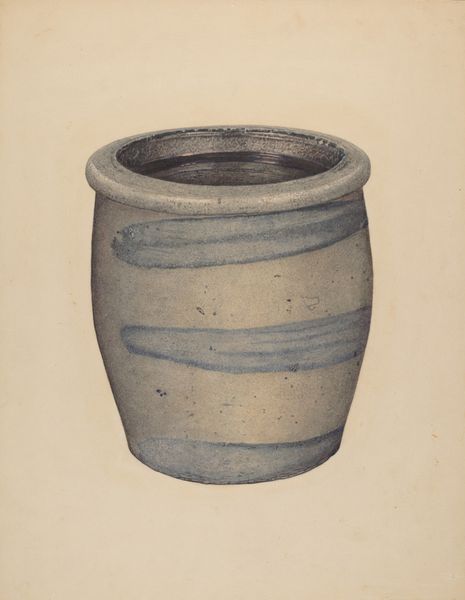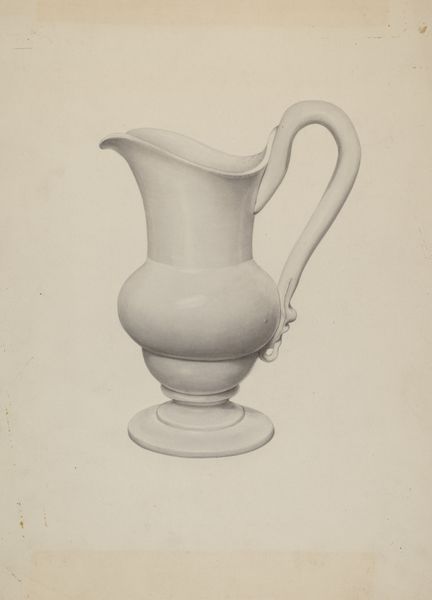
drawing, watercolor
#
drawing
#
water colours
#
watercolor
#
watercolour illustration
#
academic-art
#
watercolor
Dimensions: overall: 35 x 24.4 cm (13 3/4 x 9 5/8 in.)
Copyright: National Gallery of Art: CC0 1.0
Editor: We’re looking at V.L. Vance’s "Blue-green Flask" from around 1940, a delicate watercolor on paper. It’s simple, almost serene, and the way the light catches the glass is really quite lovely. How do you interpret this work? Curator: For me, it’s less about the serene surface and more about what the flask *represents* in its time. Think about the era, the shadow of war, resource scarcity… Everyday objects gain a heightened significance. What did it mean to carefully depict something so utilitarian during a period defined by massive upheaval? Editor: So, it’s a sort of quiet commentary? A subtle act of resistance? Curator: Exactly! It's a resistance against the erasure of the everyday, a reclaiming of beauty in the face of destruction. Consider the gendering of domestic space too, women holding the fort at home while men go to war; is it domesticity glorified or rendered precarious? Also, do you think the colour, green-blue, has a potential ecological message, maybe commenting on the scarcity and the responsibility toward nature and resources at hand? Editor: That’s fascinating. I hadn't considered the context of scarcity and gendered labour. It makes the image feel so much more loaded and complex than I initially thought. I saw tranquility, but you've opened up this whole conversation about resilience and the significance of the mundane. Curator: It also highlights the power of art to subtly critique, to record, and to reframe even the simplest of objects within a broader social narrative. By interrogating art this way, we better connect both the then and now, revealing continuities, and understanding the potential to resist systems of power. Editor: This makes me see all still lifes in a new light. Curator: That's the power of context, isn't it? To shift perspective and make visible the unseen layers.
Comments
No comments
Be the first to comment and join the conversation on the ultimate creative platform.
